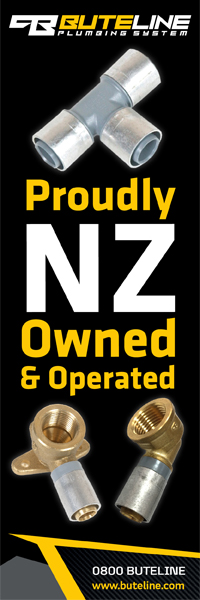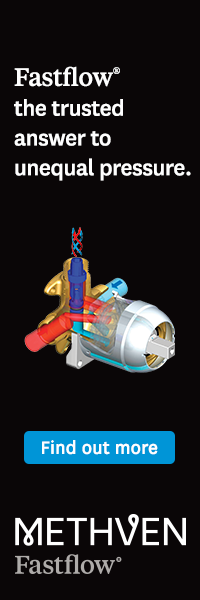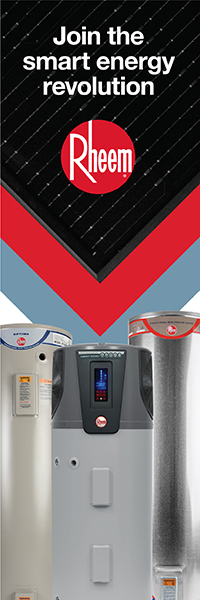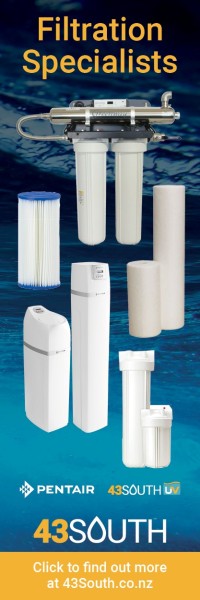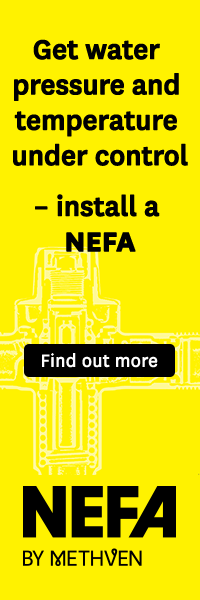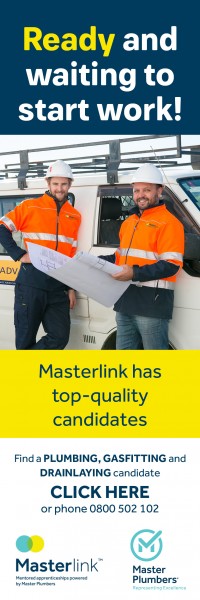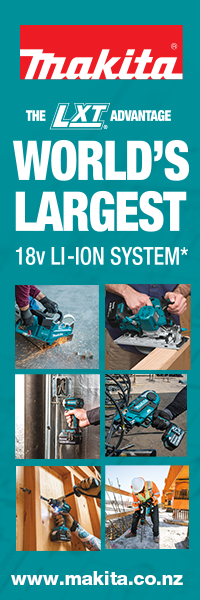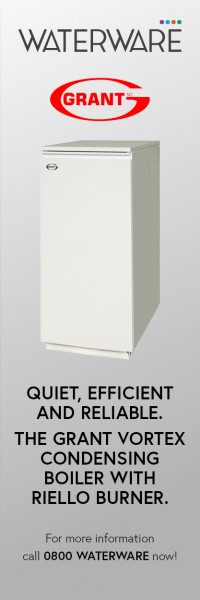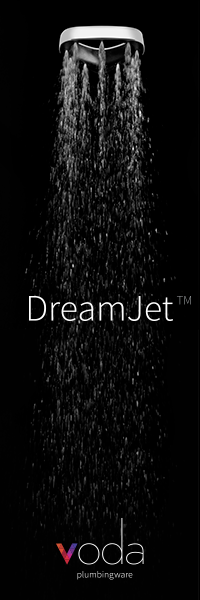No excuse for failing to plan and invest in our infrastructure
9 February 2023
Greg Wallace, CEO, Master Plumbers, Gasfitters & Drainlayers NZ
“Someone told me long ago there’s a calm before the storm. I know it’s been comin’ for some time.” So sang Creedence Clearwater Revival.
Turns out their 1971 release could have been a warning. Or maybe that warning was from the myriad climate scientists and weather forecasters who have been yelling from the rooftops for years that the weather is changing, that we can expect more extremes—and no, little old New Zealand is not immune from what we are seeing overseas.
Did that make us and, in particular, our leaders sit up, listen and prepare in earnest? Not so much.
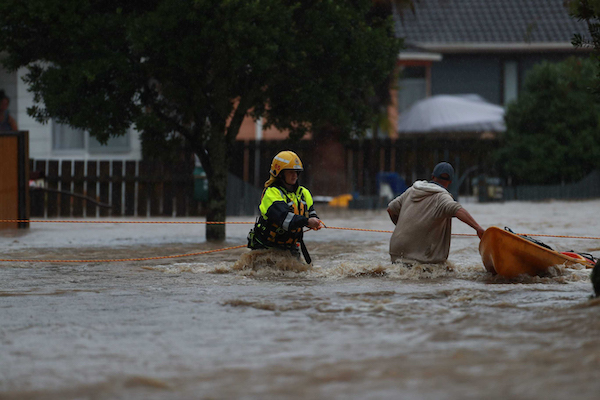
Photograph: NZ Herald/Hayden Woodward
But we have all been woken from our slumber now and what a rude awakening it was. If anything should nudge us into action, it was the sight of Auckland International Airport—our main entry point into and out of this country—converted into a swimming pool, our biggest city awash, and ordinary families wading up to their necks in dirty, waste-filled water in an effort to find safety.
We have heard a lot from our leaders and insurers in the days since the floods. One word is on repeat play: unprecedented. It is being used as the excuse for failing infrastructure, insurance payouts that we are warned will take years and a response that, on a governmental level at least, was sluggish.
My business is water, more particularly how to ensure water is where it should be. I head the Master Plumbers organisation. It represents our plumbers, drainlayers and gasfitters— those good people who are doing their utmost in this latest catastrophe to fix the pipes. Here’s some things that I know.
New Zealanders have a right to expect that our critical assets—airports, hospitals, roads, municipal buildings and other key infrastructure—are built and maintained to a level that protects against natural disasters like the one that was forecast, and that has wreaked such devastation in the upper North Island and other parts of New Zealand.
Reliable stormwater and wastewater infrastructure planning and management is essential for handling extreme weather of this kind—and the fact is, we simply have not planned and invested to the level New Zealanders should expect. There is no excuse for this. None.
Anyone who has travelled to Asian capitals like Singapore or Kuala Lumpur will know their infrastructure has been constructed to withstand monsoon conditions very similar to the extreme rainfall just experienced by the Auckland region.
Singapore’s rail network is its public transport backbone, given priority before any residential development begins. In New Zealand, we see the opposite strategy. One building goes up and before you blink, 1,000 more appear in a new subdivision without even proper analysis of the infrastructure needed to support it—let alone the building of that infrastructure.
In Auckland, rainwater retention tanks are being used in residential developments to ease the load on the stormwater infrastructure. That is like applying a band aid to a gaping wound. It’s no way to future proof our cities.
And when the infrastructure fails, another problem arises. With an estimated shortfall of 3,500 plumbers and drainlayers, New Zealand simply does not have the workforce capacity to keep up with the normal workload—let alone the extensive repair work resulting from natural disasters.
At Master Plumbers, we are acutely aware that plumbing, drainlaying and gasfitting businesses are stretched to the limit by the combination of staff shortages and an all-time high in building consents.
During the height of the floods, Auckland Council cancelled normal building inspections for two days to prioritise urgent or essential works on thousands of affected properties.
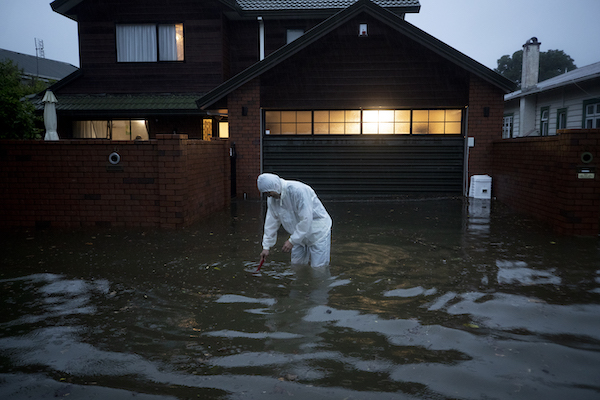
Photograph: NZ Herald/Dean Purcell
Whilst understandable, this highlights a massive issue for the plumbing industry—long delays in getting work inspected and consented. We’re having to send inspectors from around the country to help with assessments to damaged properties in the upper North Island. Yet, all the while, New Zealand remains painfully slow in adopting modern technologies to speed up the consenting process.
Please read these two factors again—labour shortages and consenting delays—and know that it means huge waits in building and construction. We have been saying both these things to Government for years, in the knowledge that we must fill the labour shortage and fix consenting delays to ensure timely building and construction. Not enough has been done.
We have three fixes to the problems, the first two of which are relatively easy to implement.
Ironically in the same week that the north of our country flooded, the Government removed free trades training under its Targeted Training and Apprenticeship Fund. At a time when we desperately need more plumbers—in the rain-drenched week that underlined this need and in the thick of a cost-of-living crisis—apprentices were told they now have to find close to $60 a week to pay for their training.
If we are to deliver the necessary maintenance and protective measures, we must continue to support trades apprenticeships; to incentivise young people into plumbing and to get them to stay in this country. And we need to prioritise skilled tradepeople to migrate to New Zealand.
So the first fix should be to restore free trades training, but this time taking a targeted approach towards critically in-demand sectors, such as plumbing and drainlaying. And let’s attract more plumbers and drainlayers to this country.
Secondly, for electricians and gasfitters, a consenting process called self-certification—the people doing the work initially certifying it—is a reality. There have been minimal problems with it. However for the kindred trades of plumbing and drainlaying, it is a long-held pipe dream, delayed by endless bureaucracy.
Consents could be issued much faster if these trades could also move to a self-certification model, using technology to give evidence of compliance instead of the slow and cumbersome face-to-face inspections now required by overworked council inspectors.
Remote inspections, using photographic and video evidence of compliance, must be fast-tracked to prevent painful delays.
Lastly we need to invest in infrastructure. Pipes are not as sexy as convention centres, but we have all seen that you can’t even get to the pretty convention centres if the roads are crumbling or waterlogged.
When the flood waters have receded, there must be a full review of how our civil infrastructure has stood up (or not). From this, it will become clear what remedies are needed to keep our hospitals, airports and roads operational, as we inevitably experience more climate change driven events in future.
In the meantime, sing with me: “I wanna know, have you ever seen the rain, comin’ down on a sunny day?”




